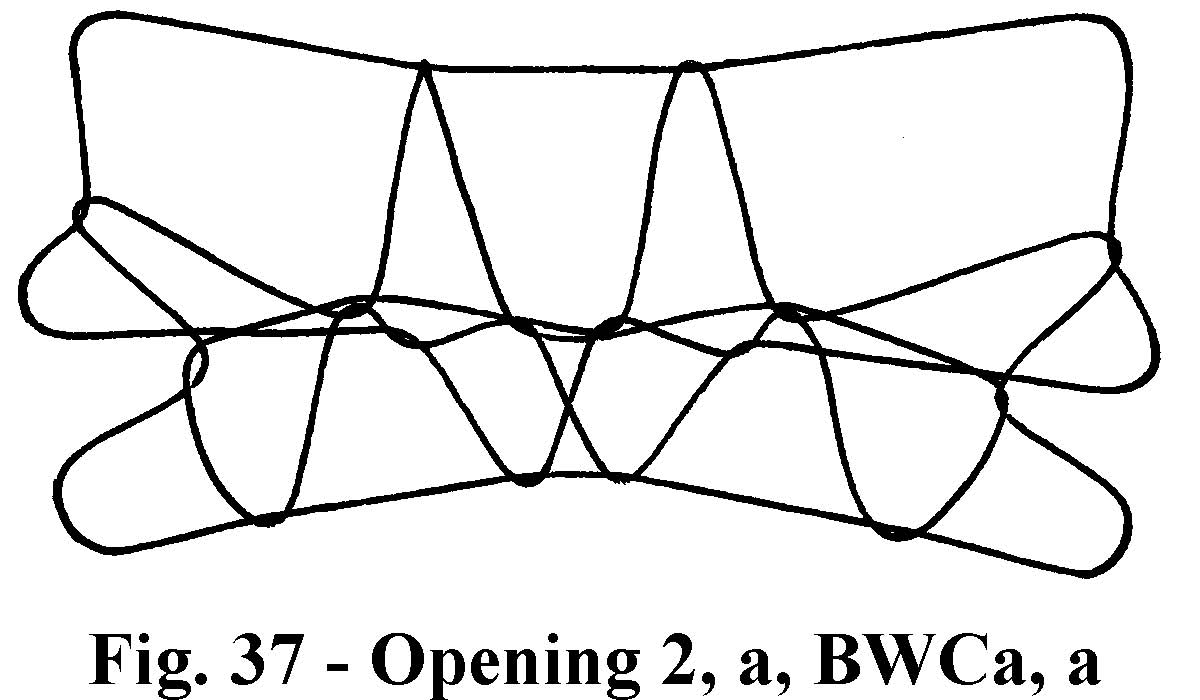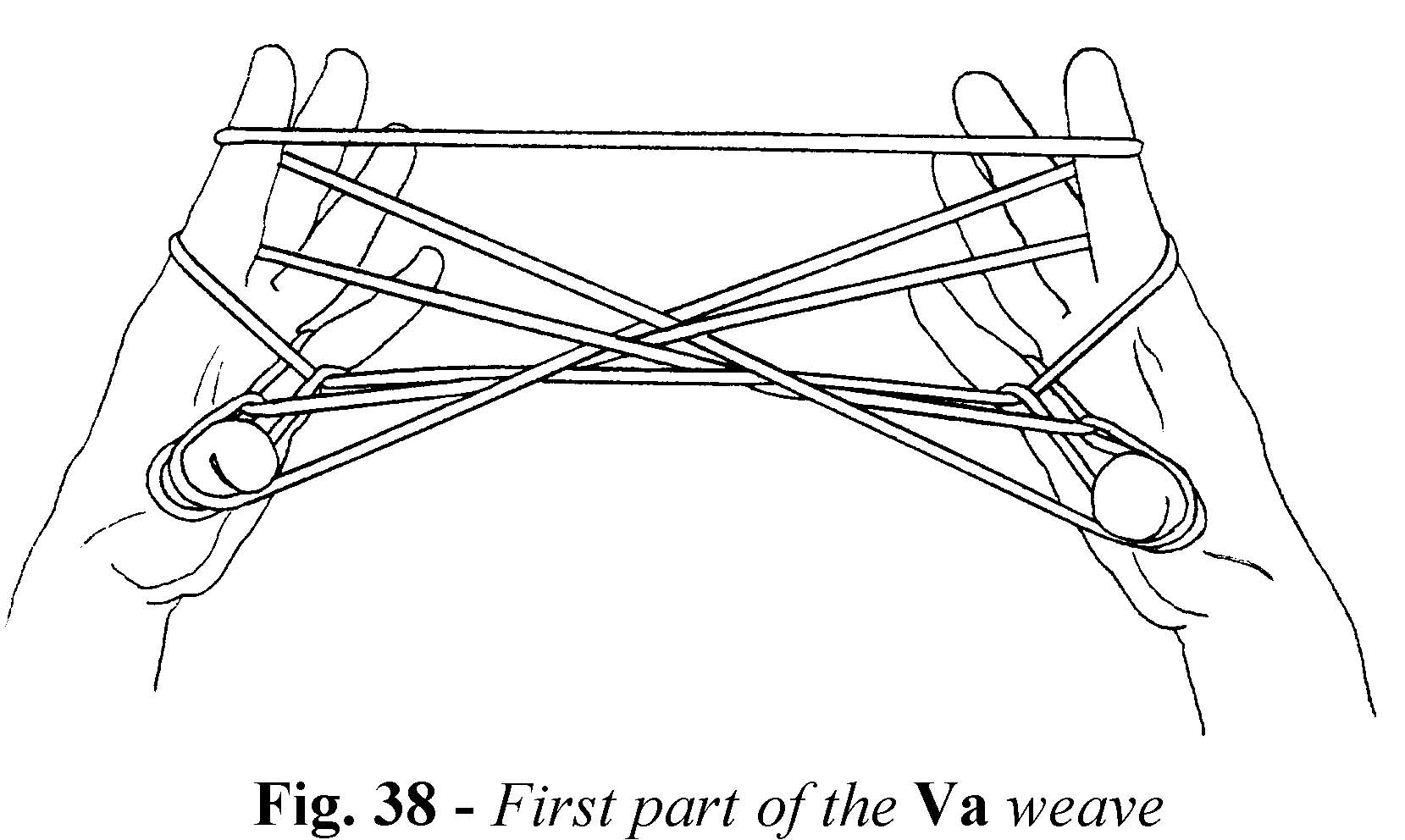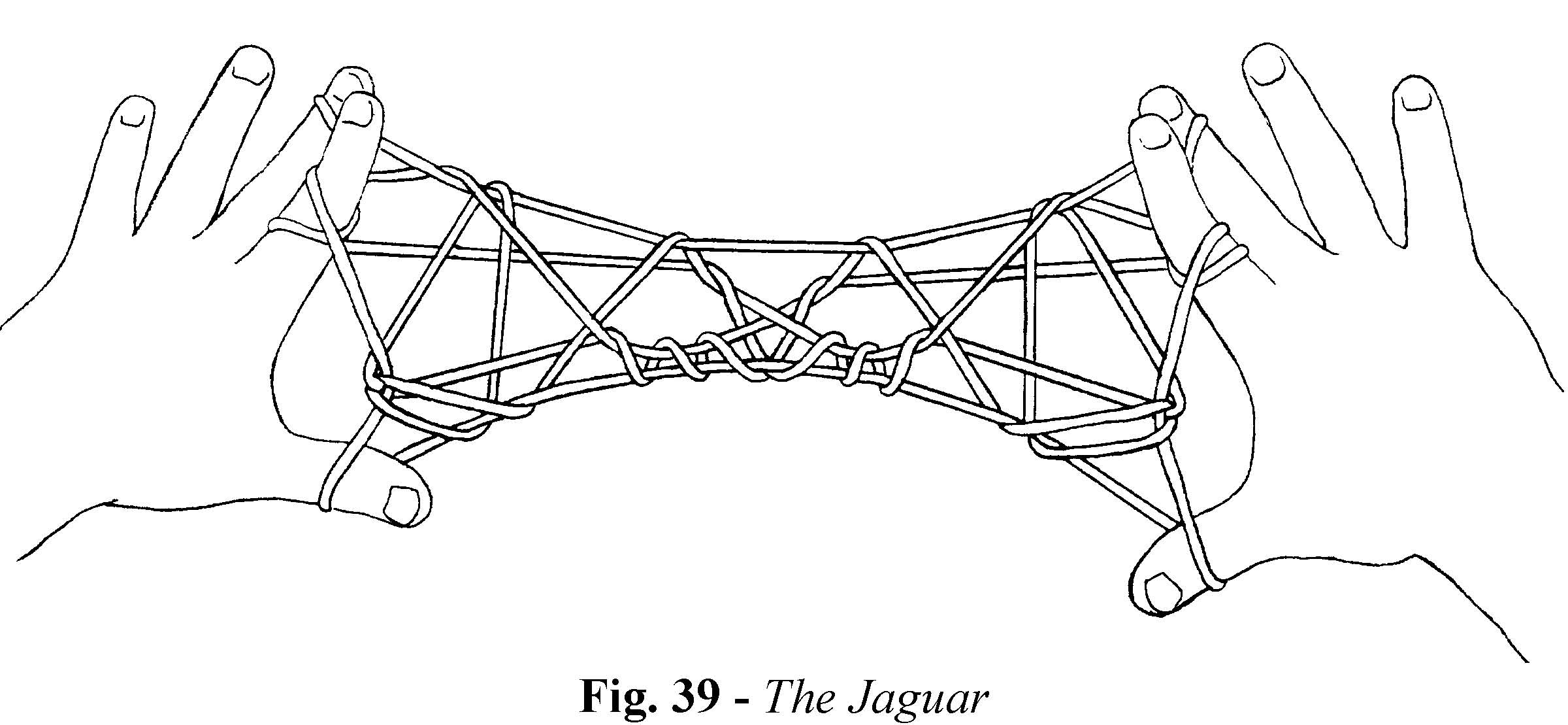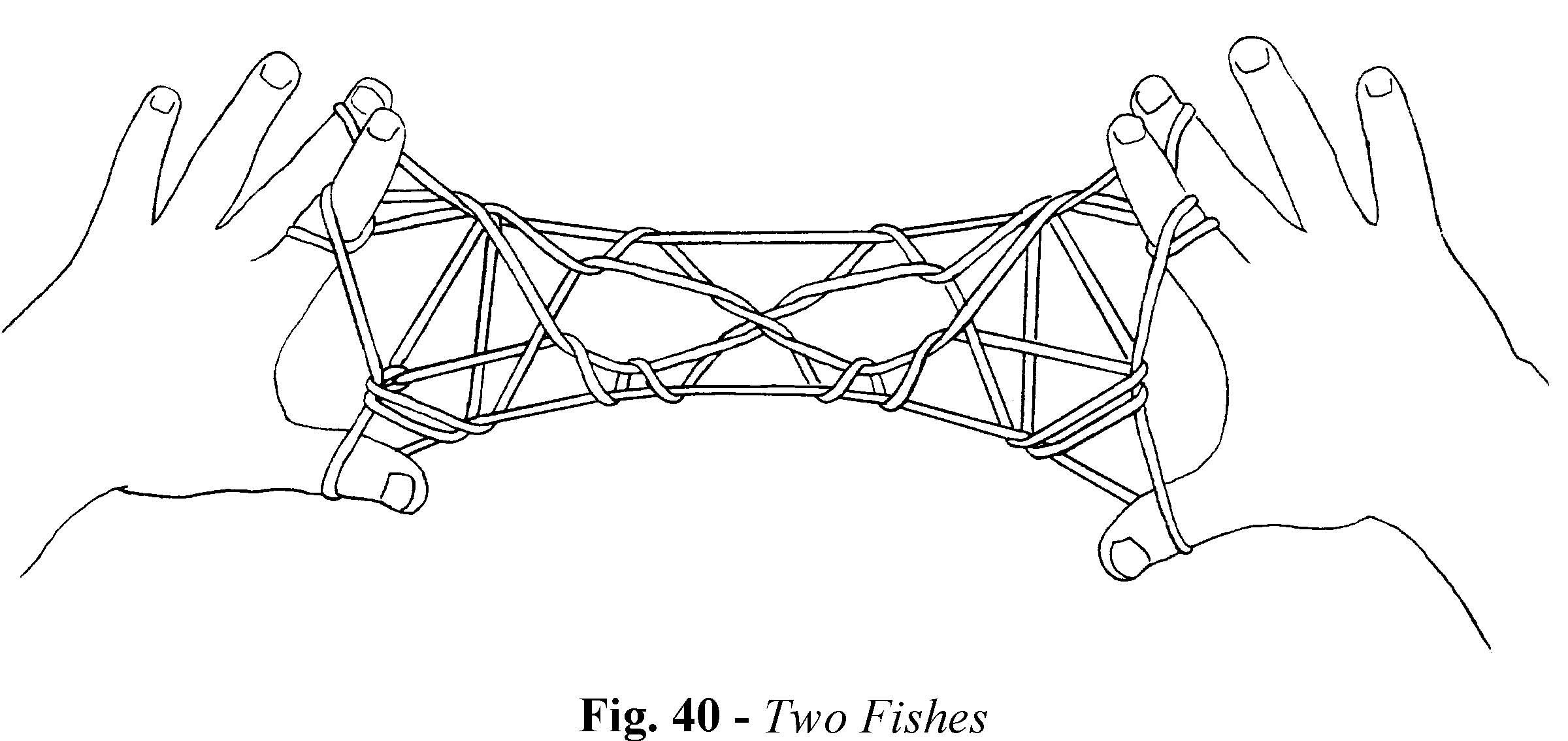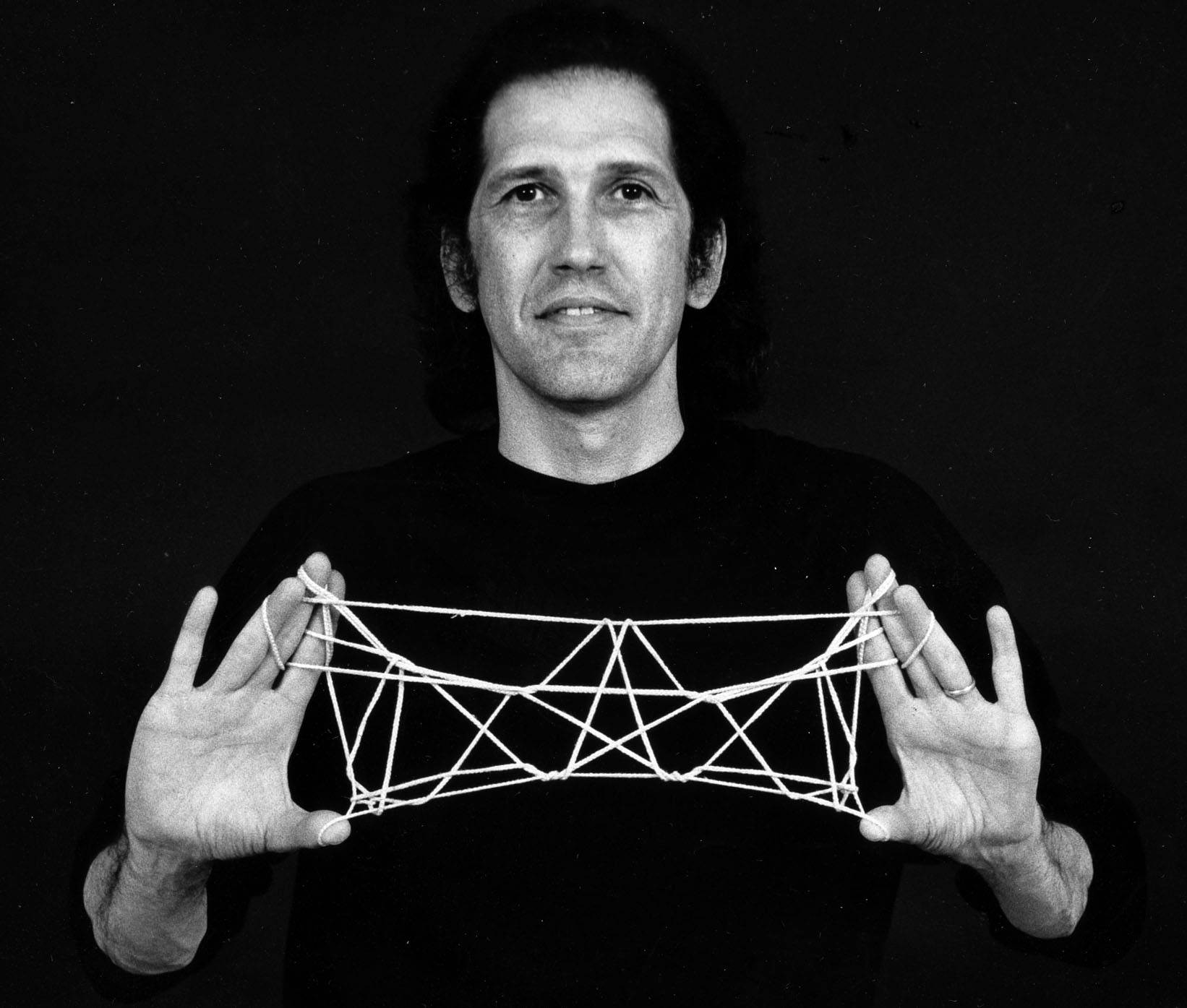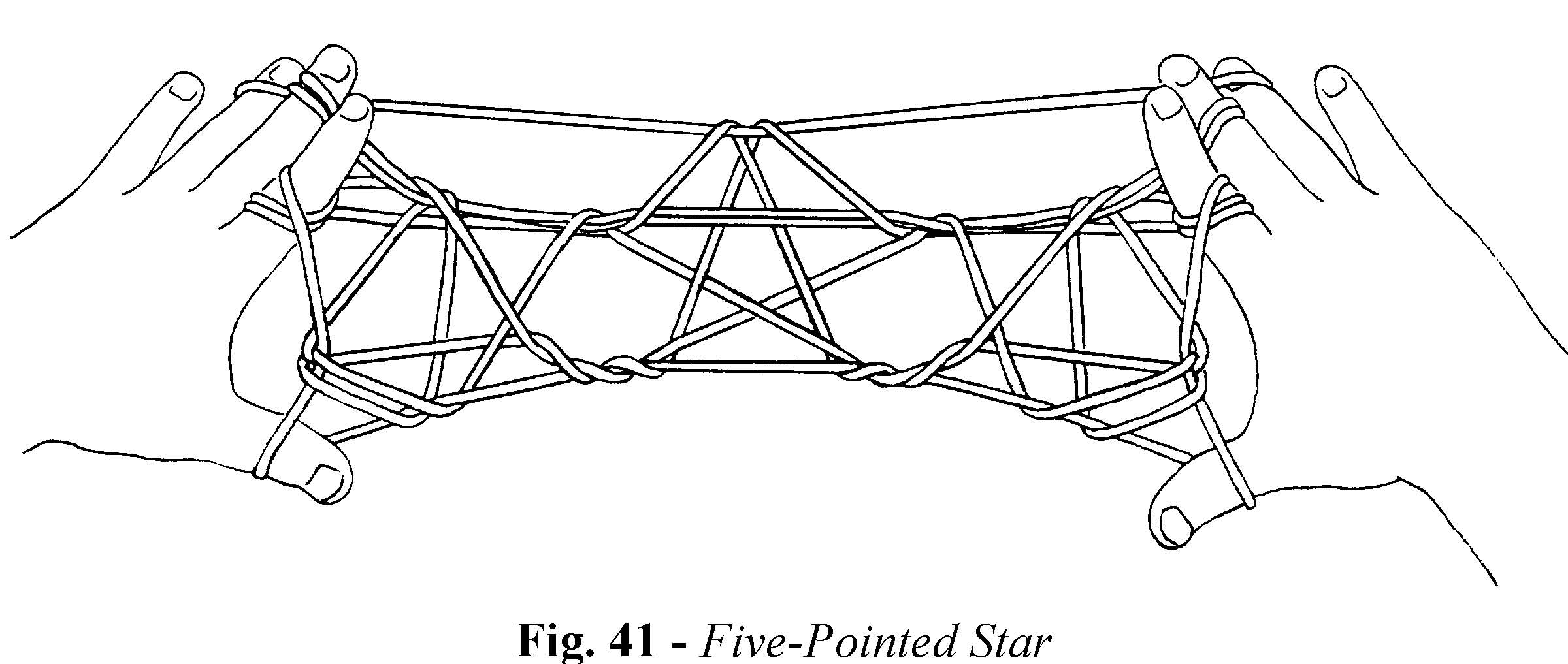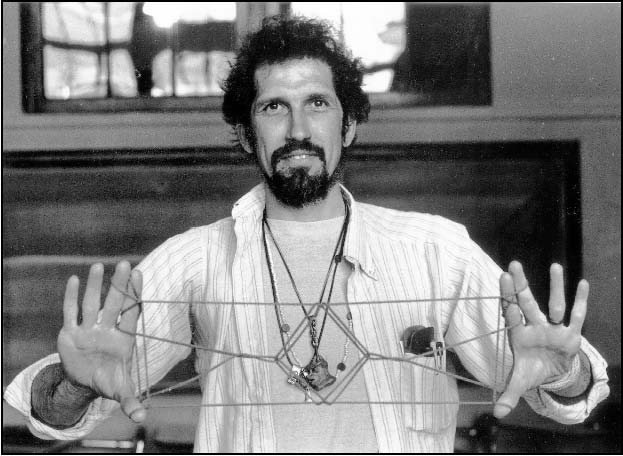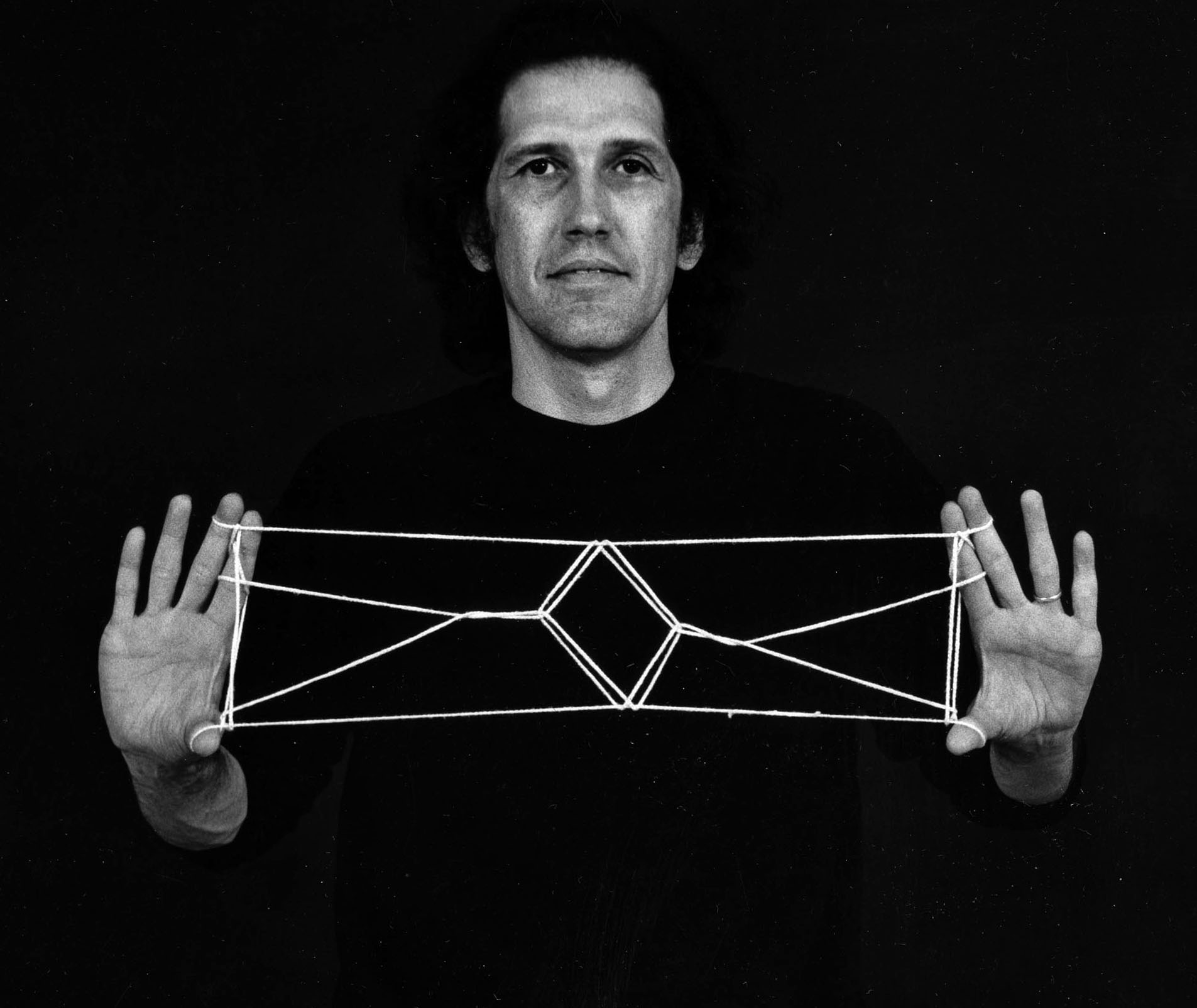extravagant figures
Backweaving
As i mentioned previously, many figures derived from opening 2 are degenerate, meaning that the web collapses onto the lower frame string leaving a large hole in the center of the design (try, for example opening 2 a a). It was at this time that i chanced upon the idea of weaving backwards as a means of pulling the mesh back up onto the upper frame string. One of the most pleasing patterns to evolve from this technique has the sequence opening 2, a, BWCa, a, where BW stands for backweave (fig. 37). Here’s how it works:
- Do opening 2, then do a complete a weave.
- Start to reset your loom by releasing the upper index loops, but do not transfer the thumb loops to the indices. Rather, transfer the little finger loops to the tops of the indices.
- You now have a “backwards” loom, and the subsequent weave (Ca) should be done as if your little fingers were your thumbs and vice-versa: Pass each little finger towards you over the lower far index string and the lower near index string (this is the mirror image of the C-Universe weave), then pick up the far thumb string (this is the mirror image of an a weave).
- To complete the backweave, each little finger picks up the upper far index string (again, little fingers acting like thumbs); then navaho little finger loops. This finishes the backweave.
- Now reset the loom for a normal weave: Transfer the thumb loops to the tops of the index fingers.
- You are now ready to do the final a weave (forward version, not backward version!) and the extension phase, as if you were making Ten Men from the second weave to the end.
Mastering backweaving requires practices. You must remember to transfer the little finger loops to the tops of the indices just before encountering the BW symbol. Then simply imagine that you are looking at your hands reflected in a mirror. Pretend your thumb is your little finger and vice-versa. Remember that everything is backwards: near and far are defined relative to your little finger, not your body. In other words, to do a Universe-A move (thumb over lower far index string), you would need to pass each little finger over the lower index string that is farthest from it (the string we normally call the lower near index string).
The V-Universe
One of the most interesting weaves in my notebook is the V-Universe-a weave (Va), which i use when making ‘Jaguar’. Although i’ve already presented it in my list of Universe moves, here is a more detailed description of the Va weave.
First set up the Ten Men loom then proceed as follows:
Pass each thumb under both index loops and pick up the near little finger string.
With each middle finger pick up the far little finger string.
Pass each thumb over the lower near index string and down through the lower index loop, then pick up the short far middle finger string and return through the lower index loop and the original thumb loop, which will slip off (the original thumb loop is the one you created by picking up the near little finger string).
Again pass each thumb over the lower near index string and down through the lower index loop, then up into the middle finger loop.
Transfer the middle finger loop to the thumb and return through the lower index loop. You now have two loops on each thumb (fig. 38).
Now you can finish the weave as you would any other weave: With each thumb pick up the upper near index string, then navaho the thumb loops (double lower loop over upper single loop).
Now you can either reset the loom by releasing the upper index loops and transferring the thumb loops to the indices, or proceed directly to the extension phase if you wish to end with Va.
Five-pointed Star (fig. 41)
This is one of my most treasured figures. Use a long, thin string.
Ten Men Loom. Katilluik the lower index loops.
Rotate the double lower index loop a full turn towards you (again, you will need to temporarily store the upper index loop on your middle finger).
Rotate the upper index loop (and only the upper index loop) a full turn away from you. From now on treat the double lower index loop as if it were a single loop.
opening 2 (thumb picks up lower near index string; finish the weave and reset the loom).
Aa (pass thumb up through the lower index loop and return with the near little finger string).
opening 3 (thumb picks up far lower index string under near lower index string; finish the weave and reset the loom).
You now have an extensively altered loom. Now do the following weaves:
a, a, Va, extend.
To reveal the Five-Pointed Star we use an altered extension that is similar to the one we use for extending our three-dimensional Ten Men variations:
With each ring finger hook down the single transverse string that crosses the center of the figure (the string created by the lower index loop katilluik move), then catch this string on its backs by rotating the ring finger away and up.
The central transverse string becomes a new upper frame string. Extend with palms facing away from you.
In summary, the sequence for this figure is: Ten Men Loom: katilluik bottom index loops, lower index loops –2/2, upper index loops +2/2, opening 2, Aa, opening 3, a, a, Va, extend, lift central transverse with ring fingers.
Dancing Diamond (fig. 42)
My students love this animated figure. Only very subtle hand movements are needed to make diamond ‘dance’.
Ten Men loom.
Do an a weave (thumb picks up near little finger string; finish the weave and reset the loom).
Now do a complex weave: Pass each thumb under the near lower index string and pick up the far lower index string (so far this is like opening 3); with the tips of each middle finger push the upper far index string toward you, under the upper near index string (and over the lower near index string), then push it down through the thumb loop; on each hand hook your thumb over the string pushed down by your middle finger (at this stage you can release your middle finger),
then downflip this string and draw it through the thumb loop, which slips off.
Now finish the weave (with each thumb pick up the upper near index string, navaho the thumb loops) and extend the figure (middle finger picks up lower near index string, release little fingers, turn palms away).
Care must be taken to lift the proper lower near index string since it becomes somewhat entangled by the procedure.
You now have a double-walled diamond flanked by coiled strings. To make the diamond ‘dance’, shift your hands back and forth ever so slightly (tilt all ten fingertips to the right, then to the left). Only very small hand movements are required to make the diamond dance.
-
things to consider
you may have your own ideas about new and more wonderful figures. you should try new things for yourself, but i caution you to make sure you take notes as you do so you will be able to recapture any new figure you find. with all these complexities it is easy to forget an essential detail and not be able to re-make a fantastic figure you discover for yourself.
